Standard raspberry varieties are gaining more and more popularity among lovers of fruit and berry plants every year. One of these varieties is Skazka.This article provides complete information about the features and advantages of the variety, all stages of planting care, methods of propagation, and you can also get acquainted with the opinions and reviews of other gardeners.
|
The standard Skazka raspberry is recommended for growing in the middle zone and in the south. In the southern regions the variety winters best. |
| Content:
|
Description of standard raspberries “Fairy Tale”
It must be said right away that information about the origin of the Skazka variety is quite confusing. In any case, there is no such raspberry variety in the State Register of Plants. It is believed that “Skazka” is an improved version of the famous standard raspberry variety Tarusa. In fact, their characteristics are very similar.
The raspberry tree "Fairy Tale" is a tall crop (from one and a half to two and a half meters in height) with very strong and thick stems without thorns. The leaves of the plants are large, dark green in color, the berries are aromatic, sweet (high in sugars), with dense pulp, rich ruby hue, and cone-shaped.
| Main characteristics |
|
Advantages of the variety
- The berries tolerate transportation well, have good shelf life and are resistant to rotting. They do not fall off the bush when overripe and are easily removed from the stalks when harvesting.
- Raspberries “Skazka” are not afraid of pests and are resistant to various diseases.
- The raspberry tree can withstand droughts and frosts down to twenty-five to thirty degrees.
- The variety consistently produces high yields (from six to ten kilograms per bush).
Flaws
- In the northern regions, raspberries need additional shelter for the winter, and it is impossible to bend lignified shoots to the surface of the ground - they break.
- A rich harvest from the raspberry miracle tree can be obtained only if all the necessary favorable growing conditions are created and fertilizers and fertilizing are applied in a timely manner.
- Harvesting the tops of the Skazka raspberry tree is difficult due to its great height.
Planting standard raspberry seedlings
Planting of seedlings is carried out in the spring at the beginning or in mid-April (before buds open), and also in the fall - in the second half of September.
Site selection
Basic requirements for the site:
- open area with full sunlight and protection from drafts and sharp gusts of wind; small hills or slopes can be used;
- deep groundwater;
- loamy or sandy loam soil with neutral or low acidity, with good air permeability;
- presence of drainage.
Selection of planting material
When buying a seedling, you should pay attention to some points.The height of the stem should not be less than thirty-five to forty centimeters, and the length of the roots should be fifteen centimeters. Damage or signs of disease are unacceptable on a young plant. Seedlings with already opened leaves take root very poorly and are not worth purchasing.
|
Nurseries, specialty stores, and agricultural farms are the best places to select planting material. |
Soil preparation
The selected area is thoroughly cleared of weeds and plant debris, dug up to a depth of about thirty centimeters and fertilized with superphosphate and rotted manure. Fertilizers are also applied to planting holes. Each of them will require a nutrient mixture of fertile soil, rotted humus, ash, peat and coarse sand.
Accounting for predecessor plants
It is not recommended to plant raspberries after tomatoes, potatoes, and strawberries. Legumes are good precursors for it.
Planting methods
Based on their preferences, gardeners choose to plant a raspberry tree in a hole or in a trench. The depth of the hole is forty centimeters, the diameter is fifty centimeters. The interval between seedlings is about one meter, the row spacing is one and a half to two meters. When planting bushes in a trench, the depth and width remain the same, the distance between seedlings is about seventy centimeters, between trenches is at least two meters.
Planting process
- The seedling is placed in the center of the hole, each root is straightened, sprinkled with soil and compacted a little. The root collar should remain at soil level.
- Each bush is watered abundantly, about five liters of water for each.
- The area around each plant is mulched with sawdust, straw or seed husks. The thickness of the layer is ten to twelve centimeters.
Raspberry care
Irrigation regime
A drip irrigation system would be ideal in this case, especially in arid regions. Watering in the usual way is carried out in moderate volumes, but regularly.
Early in the morning and in the evening after sunset, sprinkling is used. Immediately after planting and in the first seven to ten days, the seedlings are watered daily, and then as the top layer of soil dries.
|
During the flowering and fruiting period, it is recommended to water raspberries at least twice a week. |
Don't forget to read:
Application of fertilizers and fertilizers
Mineral and organic fertilizers are used to feed the raspberry tree.
In the spring, when the snow has completely melted, the raspberry field is fertilized with liquid organic matter based on bird droppings or manure, as well as wood ash and bone meal. During the period of active growth, ovary formation and until the end of fruiting, various mineral complexes are used. The interval between feedings is two weeks.
- You can use the solution by taking three tablespoons of nitrophoska and ten liters of water.
- For foliar treatment, a solution of a bucket of water and five grams of copper sulfate or ten grams of boric acid is suitable.
- In the fall, about three weeks before the onset of cold weather, two or three buckets of peat or rotted manure are added to each plant.
In spring, it is good to feed raspberries with organic fertilizers.
Soil care on site
- Loosening is required after each watering, to a depth of at least five centimeters.
- Weeding should be done regularly as soon as weeds begin to appear.
- Mulching maintains moderate soil moisture and eliminates the need for loosening and weeding. Peat or straw is used as mulch.
Trimming and shaping
When the seedling reaches sixty centimeters in height, the first pinching of the top is carried out at about five to ten centimeters. After this, the side shoots begin to grow and the raspberry bush begins to look like a tree. In this form, the standard Skazka raspberry goes into winter.
Next spring, the side shoots are shortened to the same extent, which in turn stimulates the growth of fruiting shoots.
|
Scheme for pruning a raspberry tree Fairy Tale |
Regular pruning will create the required height and shape of the crop, but do not forget about sanitary pruning. It is important to promptly remove damaged and dried branches.
Subsequently, after harvesting, two-year-old shoots are removed almost completely, and from annual shoots, five to seven, the strongest and strongest, are left.
Do not miss:
Diseases and pests - prevention and control
The Skazka variety is highly resistant to diseases, but for prevention, plants need to be treated with Bordeaux mixture every spring. Two applications before flowering, two weeks apart, are recommended.
Among the pests that are dangerous for the raspberry tree are the raspberry beetle, stem fly, and weevil. For preventive purposes, various biological products are used according to the instructions (for example, Actellik). To get rid of parasites you will already need chemicals.
In case of disease or invasion of harmful insects, it is advisable to remove and burn the affected part of the berry crop, and treat the healthy part with disinfecting solutions.
Do not miss:
Reproduction methods
Like any other raspberry, Skazka is most often propagated by root cuttings or root suckers (shoots).
Root cuttings
Between the rows, raspberries are dug up, roots with buds are selected, cuttings (with at least one bud) about ten to fifteen centimeters long are cut from them and planted in a mixture of equal parts of sand and peat. When extracting the root, it is important to be very careful not to damage the raspberry bush itself. Care consists of moderate moistening until complete rooting.
Root suckers
A mature green cutting - offspring is dug up in the fall and immediately transferred to another place. Thanks to its own root system, the plant quickly takes root and adapts to new conditions. At first, it requires systematic watering and shading from sunlight.
|
Gardeners most often propagate standard raspberries by root suckers |
Preparing for winter
Preparatory work is carried out according to the following plan:
- they dig up the raspberries, remove the weeds around them;
- autumn pruning is carried out;
- Fertilizers and fertilizing are applied to each plant;
- the soil around each crop is mulched with a thick layer of mulch;
- in the northern regions, bushes are tied and covered with non-woven material, spandbond, and agrofibre.
Do not miss:
Reviews from forums about the Skazka variety
Pavel A. “For 25 years now I have been growing raspberries on my 5 acres in the Moscow region. There are also several Skazka raspberry bushes on them.My son brought it to me in 2015 with the words “Dad, stop planting simple raspberries, here’s a raspberry tree for you.” To be honest, I doubted that something worthwhile would come out of this idea, but after trying the first berries a year later, I want to say that the variety is very worthy. Skazka is a large-fruited variety, and most importantly tasty, and in terms of yield it surpasses the varieties that I planted before.
Vitaly K. “I thought that standard varieties were not suitable for Siberia, so I bought only 2 seedlings of standard Skazka raspberries for testing. What I can note is that one of my seedlings died immediately, but this is most likely my fault, I practically did not water them, but the second one has been growing for four years and pleases me with very tasty sweet berries. I cover my raspberry tree with reeds for the winter; the first year I wrapped it in plastic wrap, but in the spring I didn’t open it right away, the bush was a little propped up and was hurting, but with the reeds everything is fine.”
Alexander, Saratov Not a bad variety. It has been growing for me for several years now and overwinters without shelter. There were no difficulties with planting and caring for them. I like that there are practically no thorns and little growth is formed. True, regarding the “raspberry tree” it turned out to be a complete deception. The Skazka variety does not grow in this form, and indeed there are no such raspberries. I made a couple of bushes on trunks. Not very difficult, but the shape must be maintained all the time and additional pruning must be done.
Veronica, Ekaterinburg We live in the Urals and have been growing standard raspberries for several years. A couple of years ago we bought a Fairy Tale seedling. The bushes, of course, are very tall and powerful, with thick stems, but they do not look like a real tree. Regular raspberries, only giant. It bears fruit well, but only if planted in a sunny place.The berries have a good taste, but they are not as sweet and aromatic as regular garden raspberries. But the harvest is very bountiful!
Tatyana Stepanova, Astrakhan The Skazka raspberry tree has been growing with us for several years. If we estimate how much raspberry we collect from our entire plantation, then Skazka raspberries are the main supplier of the crop. I like the fact that the berries are not watery, they don’t get soggy, and I have time to process the harvest. I make jam from it and freeze it whole in the freezer so that I can later use it in making desserts and baked goods.
Ilya Vasilievich, Dubna Raspberries are truly a fabulous plant, because the amount of delicious harvest that we collect surprises and pleases us. Yes, there are difficulties in propagation, but if desired, you can solve them, since the main bush has shoots. You just need to pay attention to these raspberries, and you don’t need much of it.
Ksenia P. This is not the first season I have been growing Skazka. I am pleased with the high resistance to disease. However, there are also disadvantages. For example, the harvest is very dependent on the weather in the summer.
You might be interested:
- Raspberry Tarusa tree: description of the variety, planting and care, photos, reviews
- Varieties of raspberry trees (standard raspberries) with descriptions, photos and reviews from gardeners
- How does a raspberry tree differ from a regular raspberry and how to care for it
- Raspberry Diamond: variety description, planting and care
- Raspberry Arbat: how to care for this variety
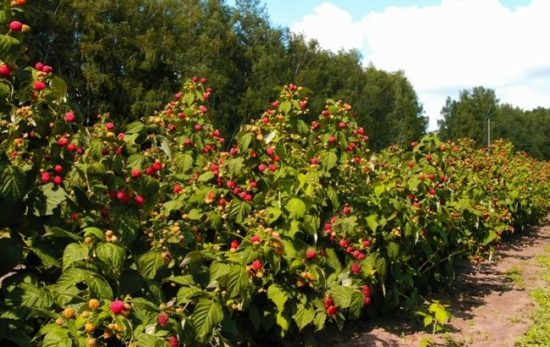
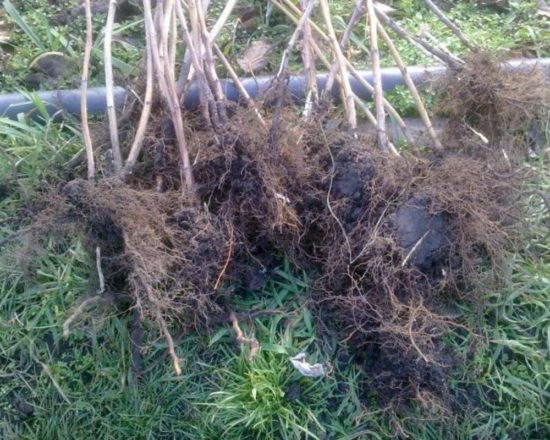

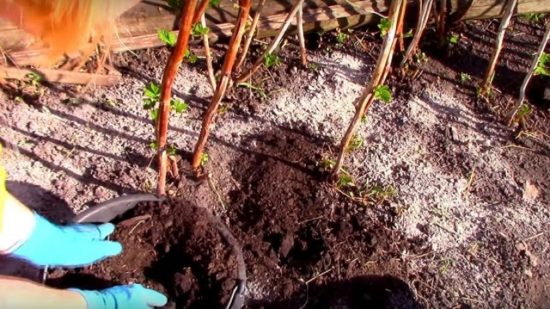
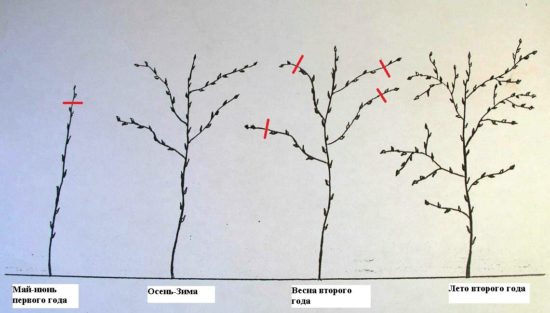
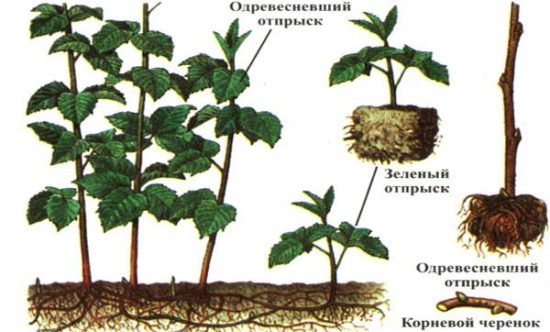


 (2 ratings, average: 3,50 out of 5)
(2 ratings, average: 3,50 out of 5) CUCUMBERS NEVER GET SICK, I'VE BEEN USING ONLY THIS FOR 40 YEARS! I SHARE A SECRET WITH YOU, CUCUMBERS ARE LIKE THE PICTURE!
CUCUMBERS NEVER GET SICK, I'VE BEEN USING ONLY THIS FOR 40 YEARS! I SHARE A SECRET WITH YOU, CUCUMBERS ARE LIKE THE PICTURE! You can dig a bucket of potatoes from each bush. Do you think these are fairy tales? Watch the video
You can dig a bucket of potatoes from each bush. Do you think these are fairy tales? Watch the video
 How our fellow gardeners work in Korea. There is a lot to learn and just fun to watch.
How our fellow gardeners work in Korea. There is a lot to learn and just fun to watch. Eye trainer. The author claims that with daily viewing, vision is restored. They don't charge money for views.
Eye trainer. The author claims that with daily viewing, vision is restored. They don't charge money for views. A 3-ingredient cake recipe in 30 minutes is better than Napoleon. Simple and very tasty.
A 3-ingredient cake recipe in 30 minutes is better than Napoleon. Simple and very tasty. Therapeutic exercises for cervical osteochondrosis. A complete set of exercises.
Therapeutic exercises for cervical osteochondrosis. A complete set of exercises. Which indoor plants match your zodiac sign?
Which indoor plants match your zodiac sign? What about them? Excursion to German dachas.
What about them? Excursion to German dachas.